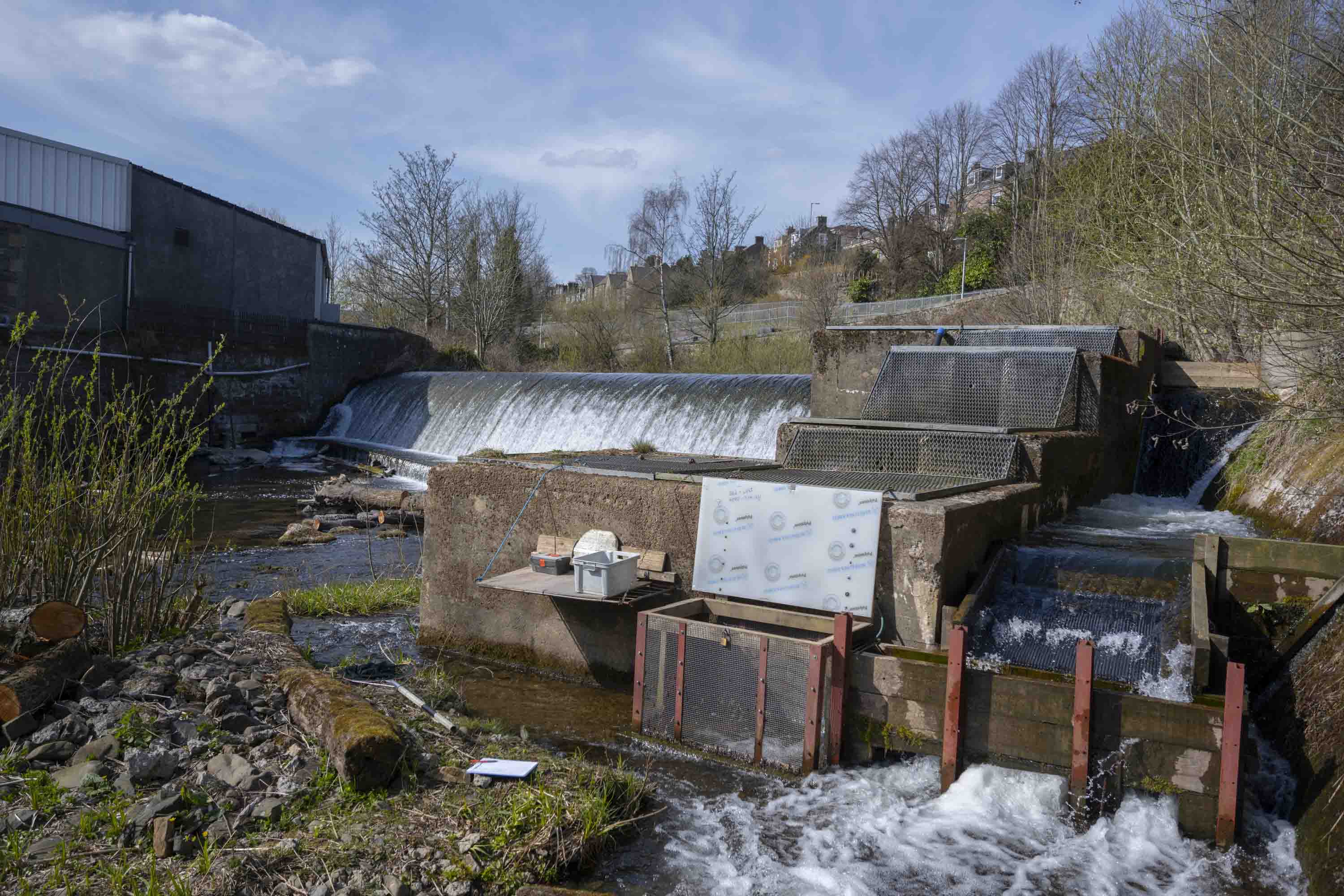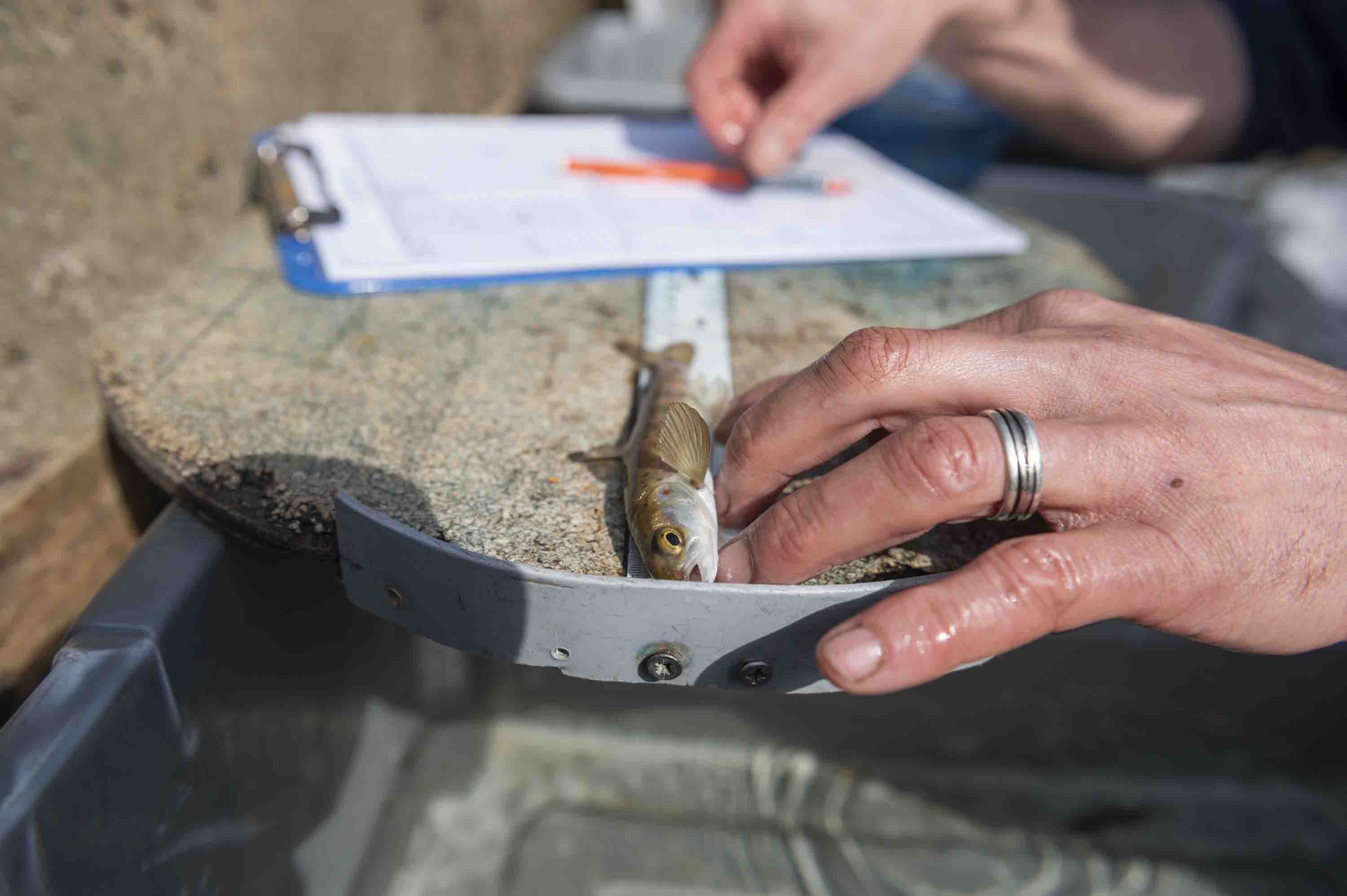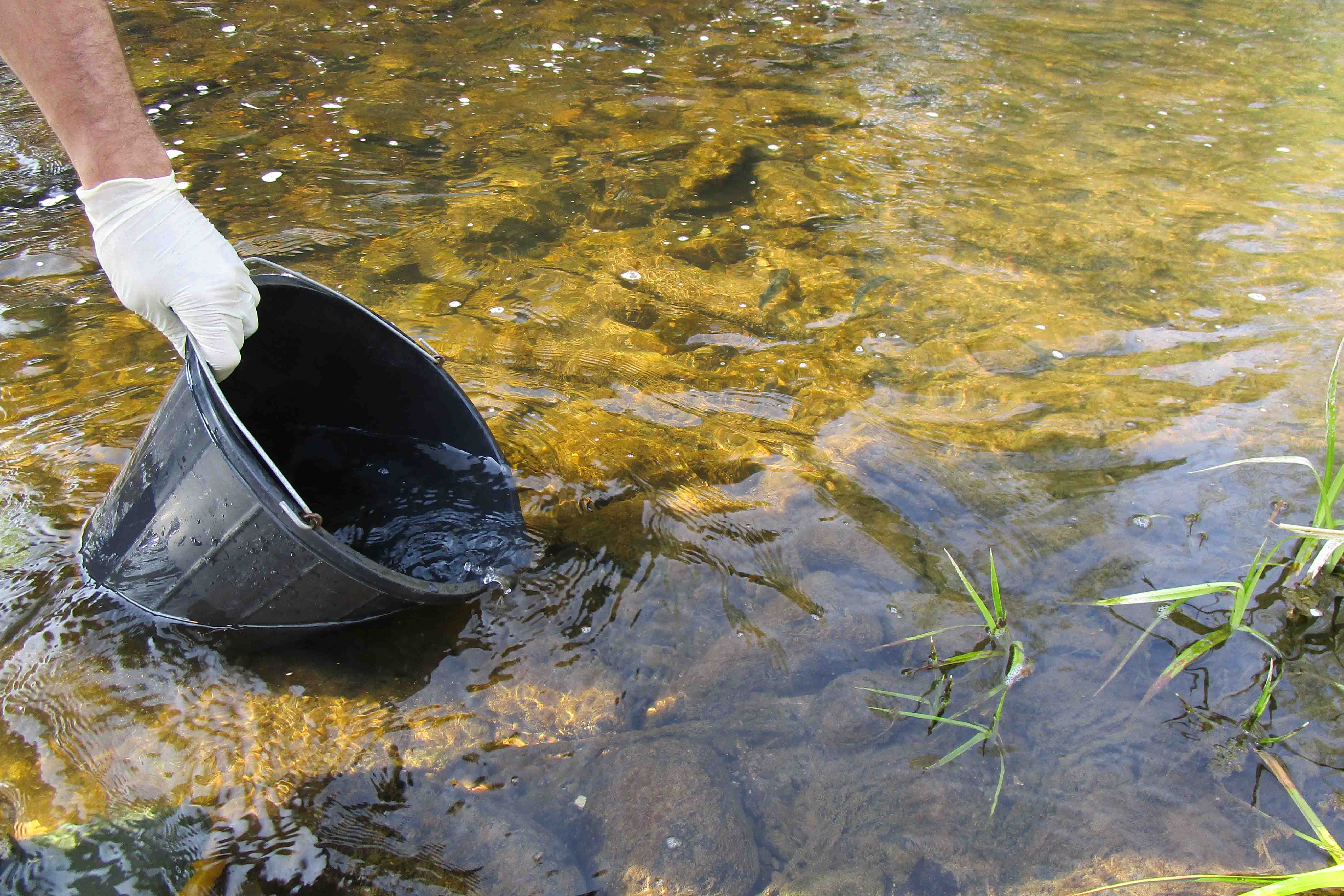Gala Smolt Trap
In 2018, The Tweed Foundation built the Gala Smolt Trap at the Skinworks Cauld in Galashiels to monitor the number of smolts leaving the Gala Water each year. The Gala Smolt Trap also provides a method of catching smolts for other smolt related studies: the smolt tracking study (looking at how many smolts survive their journey down the Tweed), PIT tagging study (monitoring how many Salmon return to the Gala as adults), and it also provides the opportunity for us to collect smolt scales.
The Gala Smolt Trap
The Gala Smolt Trap is run each year from the beginning of April to the end of May to cover the smolt run. The trap sits in a side channel created alongside the fish pass. Smolts that enter this channel pass over a grill, into a trough and swim down into a holding box. The trap is checked regularly (at least once a day) to ensure that smolts are only temporarily delayed in their migration downstream. Once caught, the smolts are counted and measured before being released back into the river to continue their migration.
As the trap does not catch all of the smolts (some swim over the cauld face), to get an estimate of the total number of smolts leaving the Gala water in any given year, we therefore need to determine what proportion of the smolts are caught (known as the trap efficiency). To find this out, each year we PIT tag salmon smolts above the trap. The proportion of these tagged fish that get caught in the trap gives us the trap efficiency for each year, which we can then apply to the total number of smolts caught in the trap to generate an estimate of the total smolt production of the Gala.

By knowing the number of smolts that leave the Gala Water each year, we will be able to relate the figures to the numbers of adults detected by the fish counter and fry and parr production. Being able to do so is useful for advising fisheries management on how best to keep salmon production in the Gala healthy.

